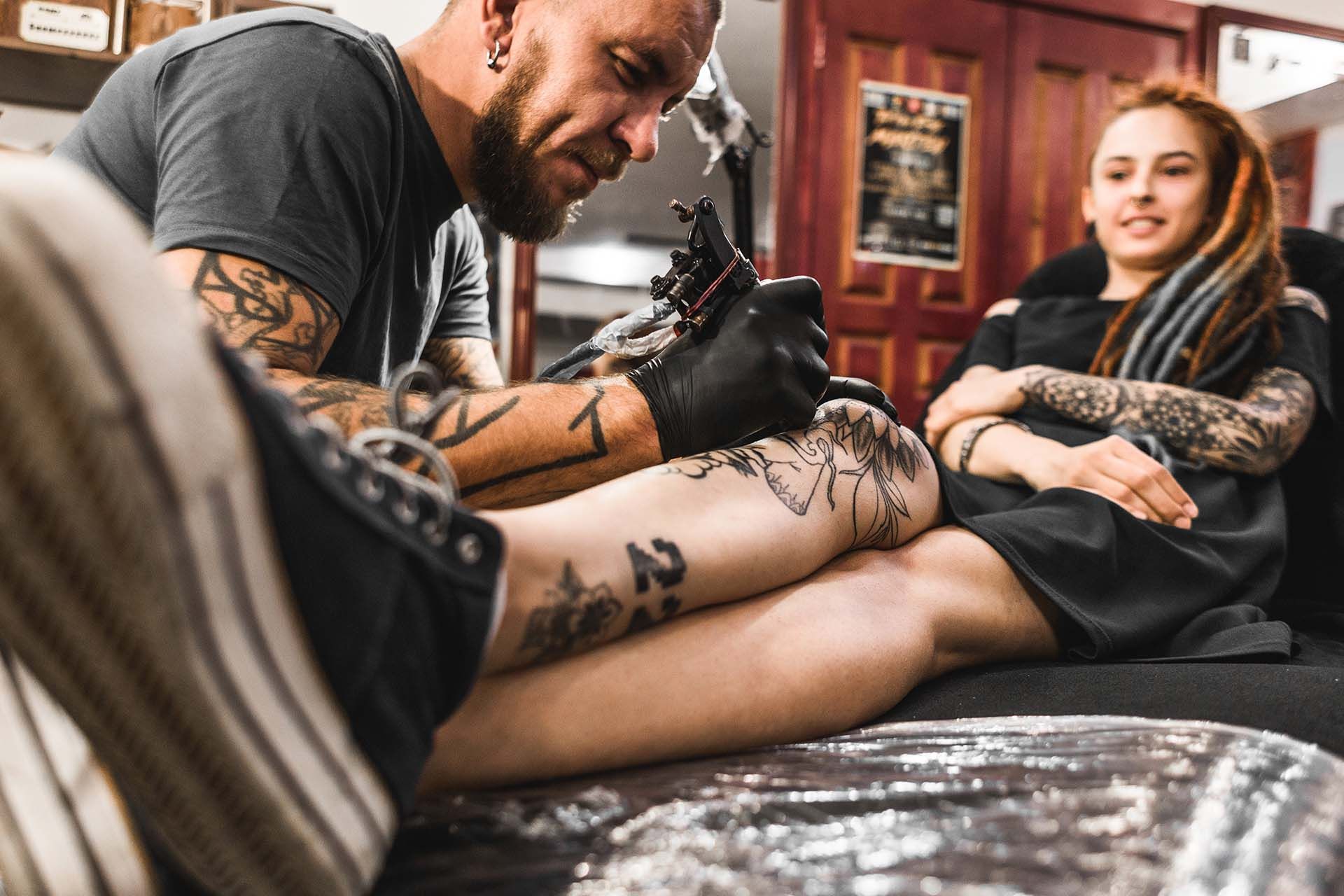How to Create a Business Plan for a Tattoo Studio
Starting a tattoo studio is a big step that requires more than just artistic talent—it takes careful planning, especially when it comes to laying out a solid business plan. A well-crafted business plan not only helps you stay focused on your goals but also increases your chances of securing funding, attracting the right clients, and achieving long-term success.
This guide walks you through the essential components of a tattoo studio business plan, helping you outline the key details for a thriving studio.
1. Executive Summary: Your Studio in a Nutshell
The executive summary is a brief overview of your tattoo studio. Though it’s the first section, it’s often easiest to write this part last, once you have more details about your business. The executive summary should cover:
- Studio Name: The name of your business.
- Location: Where your studio will be located.
- Mission Statement: A concise statement describing the purpose and values of your studio. What sets your shop apart? Whether it's a focus on custom art, providing a clean and safe environment, or building community, make it clear.
Example: “Our mission is to provide clients with custom, high-quality tattoos in a welcoming, creative space where their vision and safety are prioritized.” - Services Offered: List the types of services you'll provide, such as tattoos, piercings, and aftercare products.
- Goals: Identify both your short-term and long-term business goals. These could include reaching a certain number of clients, breaking even financially, or expanding your offerings over time.
2. Market Research: Understanding Your Niche
Next, it’s important to analyze the market and your competition. A deep understanding of your target audience and local competition will help you better position your studio. Here’s what to include:
- Target Market: Who are your clients? Think about demographics (age, gender, income) and lifestyle preferences. For example, are you catering to young adults looking for bold statement pieces, or more mature clients seeking refined custom designs?
Example: “Our target market includes individuals aged 18-35, with a passion for art and body modification, looking for custom, detail-oriented work.” - Market Trends: Consider what’s popular in the tattoo industry, like demand for certain styles (e.g., realism, watercolor), or trends in client preferences, such as wellness-focused tattoos.
- Competitor Analysis: Look at your local competition. Are there a lot of tattoo studios nearby? What styles do they specialize in, and how can you differentiate your business? This will help you carve out your unique niche and avoid oversaturation in your area.
3. Services and Pricing: What You Offer and How Much You Charge
Clearly define the services you’ll offer and your pricing structure. Clients need to know what they can expect, and a well-thought-out pricing strategy helps attract your ideal clientele. Here are some points to consider:
- Custom Tattoos: Will you focus on custom designs? If so, what makes your custom work stand out?
- Other Services: If your studio will offer additional services like piercings or tattoo removal, outline them here.
- Merchandise: Consider offering branded merchandise or aftercare products.
- Pricing Strategy: Decide on your pricing structure. Will you charge an hourly rate, a flat rate for certain styles, or a mix of both? Make sure to include costs for flash tattoos and piercings, if applicable.
4. Studio Operations: Creating a Smooth Workflow
A successful tattoo studio runs efficiently behind the scenes. Your operations plan should cover:
- Studio Layout: Plan out how your studio will be arranged. You’ll need enough space for tattoo stations, a waiting area, and consultation spaces. A clean and comfortable environment is essential not only for client trust but for passing health inspections.
Example: “The studio will feature three artist stations, a spacious waiting area, and private consultation rooms, with a focus on cleanliness and comfort.” - Health and Safety: Outline the protocols you’ll follow to maintain health and safety standards, including sterilization procedures, disposable materials, and adherence to local regulations.
- Technology and Tools: Today, most tattoo studios benefit from digital tools to manage operations. For example, using TatSites to create a professional website can showcase your portfolio and enable clients to book appointments. Similarly, Serenity can streamline your scheduling process, automatically send appointment reminders, and improve client communication.
5. Marketing Strategy: Getting the Word Out
Once your studio is set up, attracting clients is the next big hurdle. A clear marketing plan helps you build a strong brand and a steady flow of business. Key elements of your marketing plan should include:
- Brand Identity: Your studio’s brand is more than just its name and logo; it’s how you want your clients to perceive you. Are you aiming for a sleek, modern aesthetic, or a more traditional, artistic vibe? Define your brand early and make sure your marketing materials—from your website to social media—align with it.
- Social Media: Platforms like Instagram and TikTok are essential for tattoo studios, allowing you to showcase your work, engage with potential clients, and promote your services. Make sure to post regularly and interact with your audience.
- Website: Use TatSites to build a professional website that showcases your portfolio, offers online booking, and helps with SEO so clients can find you easily through search engines.
- Local Events: Attend or sponsor local tattoo conventions, art shows, or other community events to spread the word about your studio.
6. Financial Plan: Keeping Your Business Profitable
Your financial plan is crucial for tracking profitability and understanding when you’ll break even. Make sure to include:
- Startup Costs: Break down the costs associated with opening your studio, such as rent, equipment, licensing fees, and marketing expenses.
Example: “Startup costs will include $10,000 for rent, $5,000 for tattoo equipment, and $2,000 for marketing and advertising.” - Revenue Projections: Estimate your monthly and yearly income based on the number of clients you expect to serve and your pricing strategy.
Example: “We expect to generate $15,000 in monthly revenue by serving 50 clients at an average price of $300 per tattoo.” - Expenses: List your monthly expenses, including rent, utilities, wages, supplies, and marketing.
- Break-Even Analysis: Calculate how long it will take for your studio to become profitable based on your revenue and expenses.
7. Risk Management: Being Prepared for the Unexpected
Every business faces risks, and your tattoo studio is no exception. Consider potential challenges and how you’ll mitigate them:
- Health and Safety Risks: Ensure strict hygiene protocols to avoid any issues with client safety or health inspections.
- Economic Downturns: Be prepared for slower periods by building up a financial reserve and offering promotions or discounts to maintain business.
- Staffing Issues: Always have a plan for finding and retaining talented artists who align with your studio’s values and vision.
Getting Started
- Download the Business Plan Template
- Write Your Executive Summary: Start by outlining your mission, target audience, and services.
- Perform Market Research: Identify your competition and target market to refine your offerings.
- Create a Financial Plan: Calculate startup costs and revenue projections to ensure financial stability.
- Start Marketing: Build your website with TatSites and launch a social media strategy to attract clients.
By following these steps and creating a solid business plan, you are on your way to completing the planning needed to open a successful and sustainable tattoo studio.
Disclaimer: This publication and the information included in it are not intended to serve as a substitute for consultation with business consultants and professionals. Specific business, financial, legal issues, concerns and conditions always require the advice of appropriate professionals. Any opinions expressed are solely those of the participant and do not represent the views or opinions of this company.










